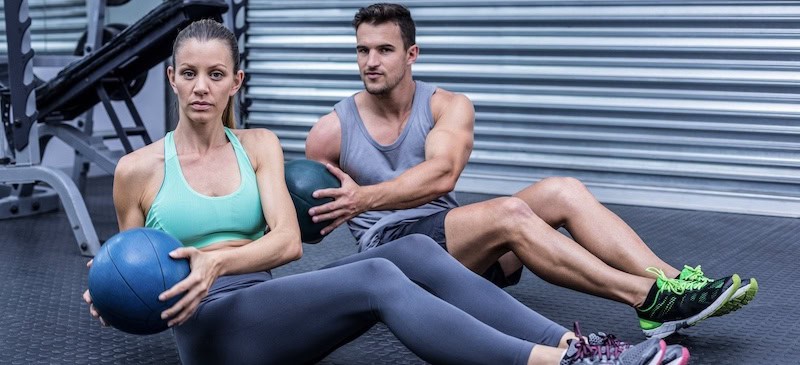This Dr. Axe content is medically reviewed or fact checked to ensure factually accurate information.
With strict editorial sourcing guidelines, we only link to academic research institutions, reputable media sites and, when research is available, medically peer-reviewed studies. Note that the numbers in parentheses (1, 2, etc.) are clickable links to these studies.
The information in our articles is NOT intended to replace a one-on-one relationship with a qualified health care professional and is not intended as medical advice.
This article is based on scientific evidence, written by experts and fact checked by our trained editorial staff. Note that the numbers in parentheses (1, 2, etc.) are clickable links to medically peer-reviewed studies.
Our team includes licensed nutritionists and dietitians, certified health education specialists, as well as certified strength and conditioning specialists, personal trainers and corrective exercise specialists. Our team aims to be not only thorough with its research, but also objective and unbiased.
The information in our articles is NOT intended to replace a one-on-one relationship with a qualified health care professional and is not intended as medical advice.
How to Strengthen Your Core: Best Core Exercises
April 22, 2025

A strong core is essential for more than just six-pack abs. It supports nearly every movement you make, from everyday tasks to intense workouts, making core exercises a vital part of any fitness routine.
Whether you’re looking to prevent injuries, improve posture or enhance athletic performance, core exercises are the key.
This comprehensive guide will walk you through everything you need to know about core-strengthening exercises, from beginner to advanced levels, and help you find the best core workouts tailored to your goals.
What are core exercises?
Core exercises target the muscles in your abdomen, lower back, pelvis and hips. These include the rectus abdominis, transverse abdominis, obliques, erector spinae and pelvic floor muscles.
Core exercises improve stability, balance and overall strength, providing a solid foundation for virtually all physical activities.
Benefits
- Enhanced posture: Strong core muscles support your spine, reducing the tendency to slouch.
- Improved balance and stability: Core strength is essential for maintaining balance in both static and dynamic movements.
- Reduced risk of injury: A stable core can help protect your back and improve your form during workouts and daily activities.
- Better athletic performance: Many sports and physical activities depend on a strong, stable core for optimal performance.
- Ease in everyday activities: Tasks like bending, lifting or even sitting are easier and safer with a strong core.
- Support for other exercises: A solid core enhances performance in compound movements, such as squats, deadlifts and overhead presses.
Core-strengthening exercises for beginners
If you’re new to core workouts, start with these beginner-friendly exercises to build a strong base:
1. Plank
- How to do it: Lie face down, and lift your body on your forearms and toes. Keep your body in a straight line from head to heels, engage your core and hold.
- Duration: 20-30 seconds
- Benefits: Improves endurance, enhances stability and strengthens your entire core, including your shoulders and glutes.
2. Bird-dog
- How to do it: Start on your hands and knees. Extend your right arm and left leg simultaneously while keeping your back flat. Hold briefly, return to the starting position and switch sides.
- Reps: 10 per side
- Benefits: Enhances coordination, balance and lower back strength.
3. Dead bug
- How to do it: Lie on your back with arms extended toward the ceiling and knees bent at 90 degrees. Lower your right arm and left leg until they’re just above the floor, then return and switch.
- Reps: 10 per side
- Benefits: Strengthens deep core muscles and improves spinal stability.
4. Glute bridge
- How to do it: Lie on your back, knees bent, feet flat. Lift your hips until your body forms a straight line from shoulders to knees.
- Reps: 15
- Benefits: Activates glutes, hamstrings and core, and helps correct posture and lower back pain.
Intermediate exercises
Once you’ve built a foundation, these exercises offer a moderate challenge:
1. Side plank
- How to do it: Lie on your side, and lift your body with your forearm and the edge of your foot. Keep your body in a straight line.
- Duration: 30 seconds per side
- Benefits: Targets obliques, improves balance and enhances spinal alignment.
2. Russian twists
- How to do it: Sit on the floor with knees bent, and lean back slightly. Hold a weight or medicine ball, and twist your torso from side to side.
- Reps: 20
- Benefits: Strengthens obliques and improves rotational power and stability.
3. Mountain climbers
- How to do it: Start in a high plank position. Drive your knees toward your chest alternately at a quick pace.
- Duration: 30 seconds
- Benefits: Engages entire core, increases cardiovascular fitness and boosts endurance.
4. Leg raises
- How to do it: Lie on your back, legs extended. Slowly raise legs to a 90-degree angle, then lower without touching the ground.
- Reps: 15
- Benefits: Strengthens lower abs and improves control and pelvic stability.
5. Bicycles
- How to do it: Lie on your back with your hands behind your head and legs lifted. Alternate bringing your elbow to the opposite knee while pedaling your legs in the air.
- Reps: 20 (10 per side)
- Benefits: Engages the upper and lower abs and obliques, enhances coordination and endurance.
6. Suitcases
- How to do it: Sit on the ground with legs extended and hands by your sides. Lean back slightly, then simultaneously bring your knees to your chest while crunching forward. Extend back out without touching the ground.
- Reps: 12-15
- Benefits: Strengthens the upper and lower abs and builds control and coordination.
Advanced exercises
Ready for a challenge? These advanced exercises will test your strength and stability:
1. Hanging leg raises
- How to do it: Hang from a pull-up bar. Engage your core, and lift your legs until they are parallel or higher.
- Reps: 10-15
- Benefits: Builds serious abdominal strength and hip flexor mobility.
2. Ab wheel rollouts
- How to do it: Kneel on the floor holding an ab wheel. Slowly roll forward, keeping your core tight, then roll back.
- Reps: 10
- Benefits: Engages the entire core, especially deep stabilizers, and improves range of motion.
3. L-sit
- How to do it: Sit on parallel bars or blocks, lift your legs straight out, and hold your body up with your arms.
- Duration: 10-20 seconds
- Benefits: Enhances core endurance, hip flexor strength and total body control.
4. Dragon flag
- How to do it: Lie on a bench, grip behind your head and lift your entire body vertically using your core.
- Reps: 5-10
- Benefits: Targets all core muscles, improves dynamic control and body tension.
5. V-ups
- How to do it: Lie flat on your back with legs straight and arms extended overhead. Simultaneously lift your legs and upper body to form a V shape, reaching your hands toward your feet.
- Reps: 10-15
- Benefits: Engages both upper and lower abs, improves flexibility and body control.
Best core exercises for women
Women can benefit from core exercises that focus on pelvic stability, lower back support and overall toning:
1. Modified plank
- Easier variation on knees, helps build endurance while minimizing strain.
- Benefits: Builds foundational strength, supports postpartum recovery.
2. Leg drops
- Controlled lowering of legs from a raised position.
- Benefits: Targets lower abs, tones abdominal wall.
3. Clamshells
- Lying on your side, knees bent, open and close legs like a clamshell.
- Benefits: Strengthens glutes and stabilizes pelvis.
4. Stability ball crunches
- Perform crunches with a stability ball to add instability.
- Benefits: Engages more core fibers and enhances balance.
5. Pilates hundreds
- Classic Pilates move involving pumping arms while holding a static position.
- Benefits: Activates deep core muscles and boosts endurance.
Best core exercises for men
Men often aim to build strength and definition in their core. Effective exercises include:
1. Weighted sit-ups
- Perform sit-ups holding a weight plate or dumbbell.
- Benefits: Increases resistance and builds muscle.
2. Cable woodchoppers
- Using a cable machine, rotate your torso in a chopping motion.
- Benefits: Builds rotational strength and core definition.
3. Decline bench crunches
- Crunch on a decline bench for added resistance.
- Benefits: Intensifies rectus abdominis engagement.
4. Hanging knee raises
- From a bar, raise knees to chest with control.
- Benefits: Builds lower abs and grip strength.
5. Medicine ball slams
- Slam a medicine ball forcefully to the ground.
- Benefits: Engages core explosively and relieves stress.
Frequently asked questions
What is the most effective core workout?
The most effective core workout combines planks, leg raises and rotational movements like Russian twists. Consistency and progression are key.
What are the big 3 core exercises?
The “big 3” core exercises are:
- Plank
- Side plank
- Dead bug
How do you strengthen a very weak core?
Start with simple exercises like pelvic tilts, bird-dog and glute bridges. Focus on form, and slowly increase intensity.
What are 5 signs that you have a weak core?
- Poor posture
- Lower back pain
- Difficulty with balance
- Trouble performing basic exercises
- Protruding stomach despite being slim
What is the fastest way to build your core?
Train three to five times a week with compound and isolation movements. Include resistance, vary your routine and maintain proper nutrition.
How can I tone my core fast?
Combine core-specific exercises with full-body workouts and a clean diet. High-intensity interval training can accelerate results.
Do core exercises reduce belly fat?
Core exercises strengthen and tone muscles but do not directly burn belly fat. Combine them with cardio and healthy eating for fat loss.
What is your deep core?
Your deep core includes the transverse abdominis, diaphragm, pelvic floor and multifidus. These muscles stabilize the spine and pelvis during movement.
Conclusion
- Strengthening your core is essential for overall fitness, injury prevention and daily function.
- Whether you’re a beginner or advanced, incorporating the right core exercises into your routine will lead to noticeable improvements in strength, stability and confidence.
- Stick with it, challenge yourself and enjoy the journey to a stronger core!




